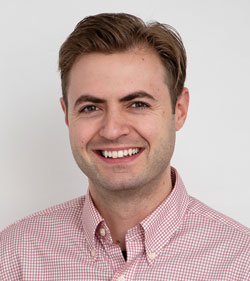Welcome to Conservation Ag Update, we begin in the Indianapolis area, where No-Till Innovator Mike Starkey hosted a special event of his own.
Let’s head inside the first-ever Conservations About Conservation workshop for landowners at Starkey Farms Partnership in Brownsburg, Ind. The innovative educational and networking event was designed to convey to landowners the benefits of no-till and cover crops, and how they extend well beyond the rent check. Bob Barr of Indiana University-Indianapolis helped Starkey put this together, along with the Nature Conservancy and other local organizations. One of the big takeaways here — fellow no-tillers might benefit from hosting an event like this to teach landowners what conservation practices will do for the land they’re renting out.
“You got to get the thinking of, “Okay, what do landowners want to hear?” And so, instead of talking about how to improve their equipment for no-till or what kind of cover crop seed to purchase, so on and so forth, that type of agenda, they want to hear an agenda about their farm, their soil, their water, and hopefully transition their tenants in providing the soil health practice that I do.
“Contact your county and get a landowner list. I actually personally contacted all my landlords and a lot of neighboring landowners in our county through our Soil and Water Conservation District, because we know who owns the land. It’s public information. So, we just actually just went directly to the landowners and sent the email out and sending the agenda with the invite.”
– Mike Starkey, No-Till Innovator, Brownsburg, Ind.
“Why this is important today is, here in Indiana, the watershed where we’re at is about 50% of the farm ground is farmed by somebody that doesn’t actually own it. And so, today we’re shepherding a conversation between landowners and farmers about conservation outcomes. What’s something we can all better do together collectively?”
– Mike Dunn, The Nature Conservancy
“The USDA and the NRCS understand and see that a lot of the rental ground is just not being managed with conservation practices. And that population doesn’t seem to really get a lot of the outreach. So, one of the things we wanted to try to do is USDA said, ‘How do we reach them?’ The farmers, the producers talk to each other. They go to the county extension agents. They go to the soil conservationists in the county. Absentee landowners or rented landowners often don’t do that. So, we wanted a way to reach those people. We came up with the idea of trying to put together an event, like we often do to talk to each other, but to reach out to people outside of that core community.”
– Bob Barr, Indiana University - Indianapolis
Our Mike Lessiter will have more coverage from the workshop on No-TillFarmer.com
Watch the full version of this episode of Conservation Ag Update.







